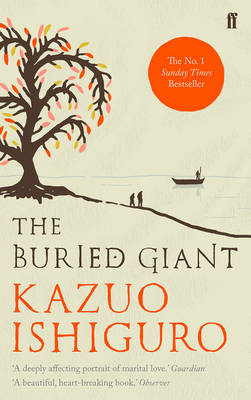Ishiguro’s first novel in 10 years, The Buried Giant, has been keenly anticipated by many. However, if you are looking for something akin to his previous book, Never Let Me Go, I would advise you to look elsewhere. Although there are some common themes between the two works, their style and form are worlds apart.
The Buried Giant is set in a post-Roman Britain populated by ogres and dragons, where the rule of King Arthur is still in living memory. However, a mysterious mist of forgetfulness engulfs the land and even recent memories fade. The novel itself, on the other hand, is a constant reminder of the literary traditions that it is descended from. The text reads as a fable or legend, with its simple and lyrical, yet often repetitive language, an atmosphere helped by the heavy symbolism that is a constant feature throughout.
However, Ishiguro also creates a novel that could be described as a parable, a fantasy, an epic of sorts or a historical novel. This straddling of so many different genres becomes problematic, however, as depth of character is sacrificed in the name of what feels like a self-indulgent quest on Ishiguro’s part.
The protagonists Axl and Beatrice, an old Briton couple, lack depth throughout the narrative, despite Ishiguro revealing more and more of their forgotten pasts as the novel develops. Their sweet and caring relationship soon turns sickly, particularly as Axl is unable to abandon calling Beatrice “my princess”. And indeed, that is all Beatrice is allowed to be. She is either the princess idolised on a pedestal or the fallen woman. Although she is anxious to regain lost memories and visit their long forgotten son, Ishiguro denies her any agency within the narrative. While perhaps this is accurate considering the historical setting of the novel, Beatrice and any other women who briefly appear in the text are reduced to fulfilling stereotypes: the unfaithful wife, the bitter widow, the absent mother.
The stereotyping doesn’t end there. The novel is set in a Britain populated by both Pagan Saxons and Christian Britons, who co-exist somewhat uneasily, aided by the mists prevent that them from remembering their previous conflicts. The Pagan Saxons are presented as stupidly superstitious in the text, and although one of the main characters, a skilled warrior called Wistan, is a Saxon, the text only seems to allow him to escape the typical Saxon attributes through his upbringing among Britons. Even the promising young Saxon boy, Edwin, who becomes an apprentice to Wistan, is primarily described through his difference to the community he has grown up in.
Laying aside these issues, the concerns in The Buried Giant are certainly not trifling, such as the challenges of maintaining peaceful relations between cultures with fundamental differences in beliefs and the question of memory. For instance, many characters assert that the mist is vital in preserving peace and that to remember the atrocities of previous conflict will only result in a renewed cycle of vengeance. Yet the text presents, somewhat comically, the idiocy of societies that lack an awareness of their past – particularly when that past is something that happened only a few hours earlier.
However, these questions cannot save the novel from its inadequate characters and sedentary atmosphere. The tension never builds, even in moments of excitement and conflict. Although perhaps this is all part of Ishiguro’s design plan, with the reader expected to interpret some deeper point to the whole text, the continual bombardment by symbols and textual allusions prevents even this. Ishiguro creates the pervading impression that the novel provides a subtly clever judgement on the issues, but on finishing the novel I felt that really it was all hot air. I felt that I had followed the progress of the quest only to finish feeling it wouldn’t be such a shame to lose all memory of it to Ishiguro’s fictional mists.







